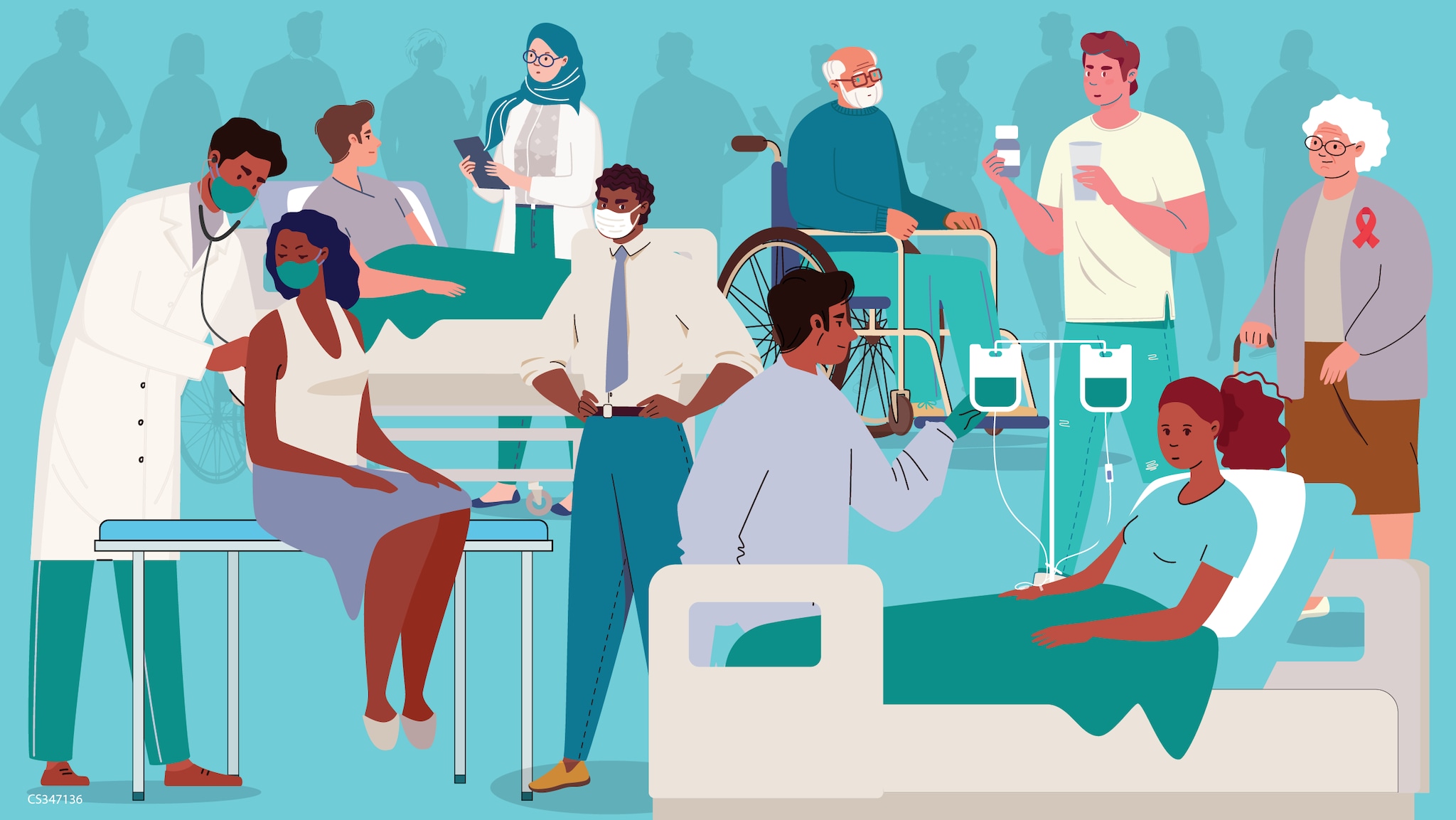Key points
- Social differences like living conditions, income, occupation, and access to care can create health inequities.
- Some fungal diseases affect some populations more than others based on biological conditions like sex, race, and ethnicity.
- Data covering diverse populations helps identify health inequities.
- Policy changes, education, and awareness helps advance health equity.

Why it's important
Fungi cause many types of illnesses, some of which are life-threatening. Fungal diseases can affect anyone, but people with weakened immune systems are at greatest risk of severe illness and death.
Fungal diseases disproportionately affect Black, American Indian or Alaska Native, and Hispanic persons. These groups have higher rates of fungal deaths compared with other groups. This was especially so during the COVID-19 pandemic.
These disparities are likely driven in large part by inequities in the social determinants of health (SDOH). SDOH are the conditions of the places where people live, work, and play that affect health risks and outcomes.

What prevents health equity
Differences in SDOH can lead to health inequities and increase fungal disease impact on some populations. People work outdoors in certain areas are more likely to inhale fungal spores from the environment. Health inequities impacting other health conditions can have a ripple effect. The risk for diabetes is higher among people living in areas with poor access to nutritious food and healthcare. Diabetes is a risk factor for several fungal diseases.

What CDC is doing
CDC is committed to promoting health equity and has identified priority areas to address inequities in fungal diseases. CDC engages in activities to support each priority.
Priority 1: Expand data and research
Data on the epidemiology of fungal diseases across demographic and geographic populations can help identify factors that drive inequities. Surveys, interviews, and focus groups with clinicians and affected populations can shed light on perspectives and barriers to health equity. Data and research can help inform interventions to address disparities.
Current data expansion and research projects include examination of:
- The relationship between fungal diseases and social determinants
- Using the Social Vulnerability Index and Environmental Justice Index
- Using the Social Vulnerability Index and Environmental Justice Index
- Disparities in healthcare-acquired fungal disease incidence.
- Examining facility-level access and quality of care
- Differences in clinical care by age, race, sex, and other factors.
- Examining facility-level access and quality of care
Priority 2: Develop health equity interventions
Certain strategies can address the disproportionate burden of fungal diseases face by some groups.
Clinician education about high-risk populations can help them adapt approaches to better serve patient-specific needs. Increased access to laboratories, especially with antifungal susceptibility testing, helps more people get timely appropriate treatment even in remote areas.
Targeted public health education campaigns can empower populations at higher risk to take preventative actions and know when to seek care.
Interventions that address health equity include:
- Fungal disease outreach to high-risk populations in collaboration with
- the Bureau of Prisons
- Migrant farm worker organizations
- Tribal Health Organizations
- Indian Health Service
- the Bureau of Prisons
- Addressing risks to migrants and refugees coming to the U.S. by
- Raising awareness of neglected tropical diseases.
- Studying the impact of antifungal-resistant ringworm.
- Raising awareness of neglected tropical diseases.
